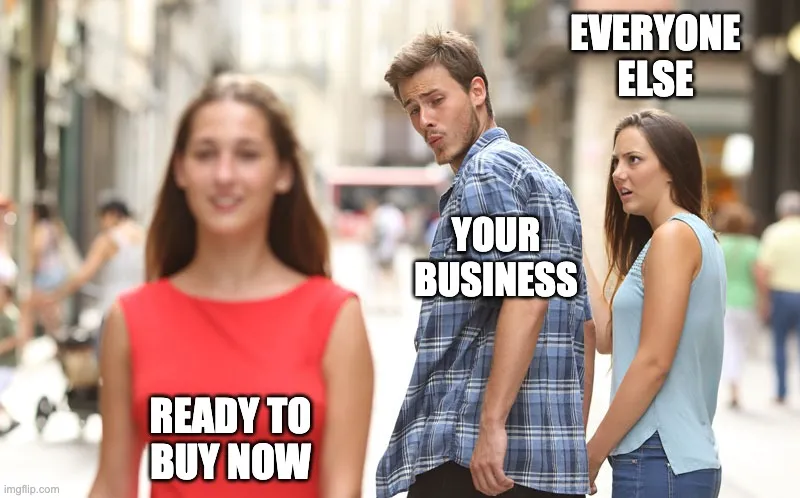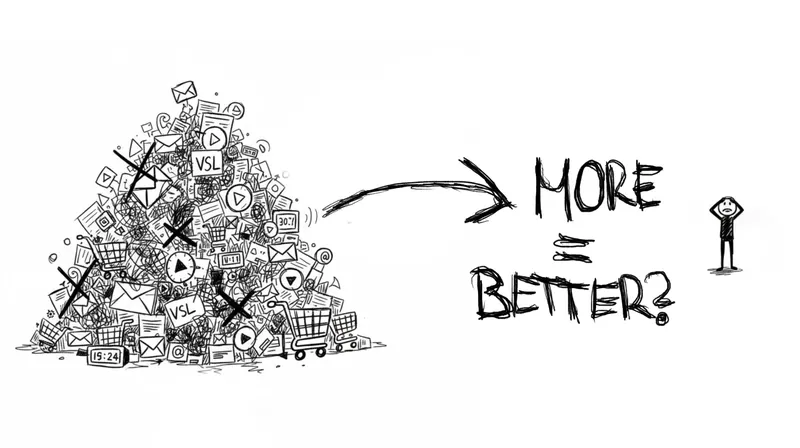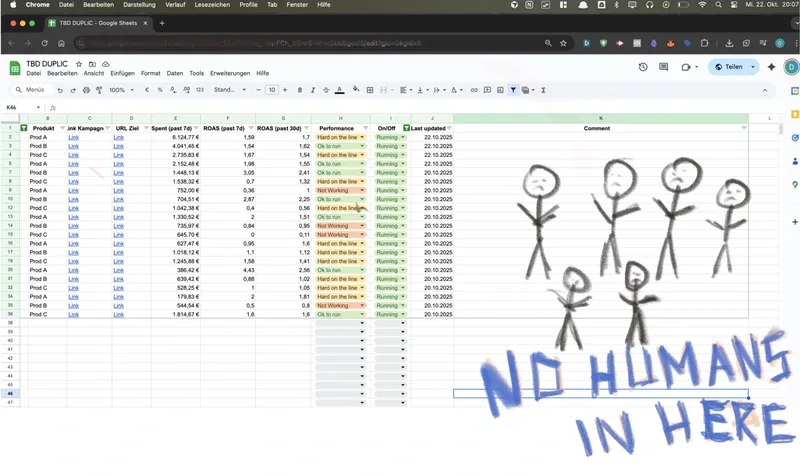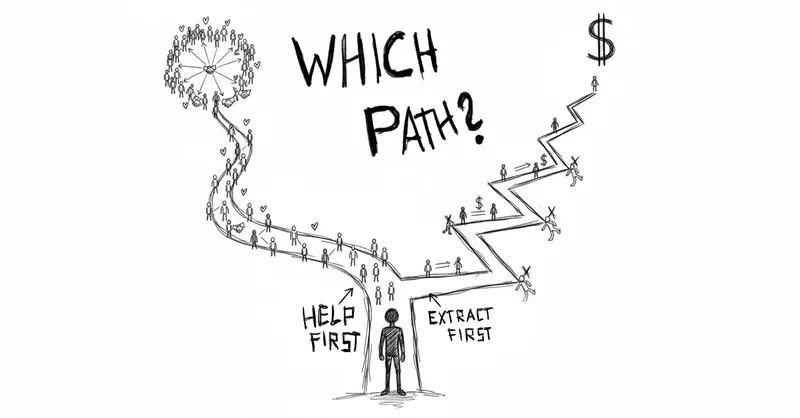What gets lost when the dashboard becomes the goal and the human on the other end disappears.
I need to tell you about something I’ve been watching. A pattern. And I’m complicit in it, which makes this even harder to write.
 Is your business in it for the long term?
Is your business in it for the long term?
Over the past 8+ years, I’ve worked with several clients running educational businesses online. Not only classic online businesses. E-Com. SaaS. Agencies. Different industries, different models, but the same arc every time.
At first there is intention. Real care. Emails written by humans who gave a shit. The person on the other end wasn’t a “lead.” They were someone who needed help (and buys the product).
Then we start building the machine.
Templatize the process. Automate the workflows. Create frameworks that turned “a few funnels per year” into “multiple funnels every week.”
And listen… it worked. Beautifully. The systems hummed. Thousands of people got access to information they genuinely needed.
Real value, delivered at scale. AND businesses get revenue… mhhh yummy revenue. Revenue like food in these Mukbang videos.
I love watching it. The systems working. Not the Mukbang videos. There’s something deeply satisfying about a well-designed system doing its job.
But.
When the Question Changes
At some point something would shift. Not all at once. Gradually.
The emails started looking identical. Same structure, different words. Landing pages became indistinguishable. Swap the headline, change the expert’s face, ship it. The templated-ness became obvious. But that isn’t the real problem.
The real problem is the goal.
At some point, the question changed:
“How do we help human beings so much they can’t help but buy from us?”
transformed slowly and steadily to…
“How do we extract maximum value from this asset?”
More emails. More upsells. More urgency tactics. More optimization. Less human.
 Does more stuff always help?
Does more stuff always help?
And now we are at the verge of putting even more…
Gasoline on the Fire
AI is the flavor of the month. Except it’s not going anywhere. It’s here. And it’s not just a tool… it’s an accelerant.
Because now you can scale the output without scaling the intention. You can generate a hundred emails in an hour. All “optimized.” Depending on the input they even sound vaguely like they were written by a human who cares.
Except they weren’t.
Less friction. More output. More scale. The machine doesn’t just hum anymore. It roars.
And the numbers? They look great.
Or to say it differently…
We fight numbers with numbers because we create so much slop that eventually one of the things will work… without thinking about the impact it has long-term.
I don’t have a clean answer about whether this is good or bad.
Ideally these systems still deliver value. The information can be still useful. Revenue goes up. Businesses are growing. People are getting help.
But I can’t shake the feeling that something’s being lost. And I think I know what it is.
The Metrics Mirage
Your dashboard doesn’t tell you the whole story.
 Your dashboard can’t see the humans you’re leaving behind
Your dashboard can’t see the humans you’re leaving behind
When you optimize for a metric, you’re making a trade. CTR. CPA. Conversion rate. Revenue per subscriber. All useful numbers.
But funnels aren’t linear. They’re systems.
Part A can impact Part Z even when there are three steps in between. Optimize one piece for extraction… squeeze a little more here, push a little harder there… and you create stress fractures everywhere else.
The dashboard shows conversions. It doesn’t show the people who almost converted but felt something was off.
It doesn’t show the slow erosion of trust. It doesn’t show the 90% of the addressable market you’re not even reaching because your entire system is optimized for the 10% who are ready to buy right now.
And here’s the part that makes me uncomfortable… it’s the moment when the numbers become the goal, and the human on the other end disappears.
We’re not trying to help someone anymore. We’re trying to move a metric.
I don’t think most people realize it’s happening. They’re genuinely trying to build something sustainable. They think they’re playing the long game. But they’re optimizing for short-term gains because that’s what the dashboard rewards.
I’ve done it. You’ve probably done it. We all have.
Are we out for one-night stands?
Let me put it differently.
Imagine optimizing a dating strategy for one-night stands.
It can work. There’s a market for it. Build a system: right opener, right venue, right close. Fast. Efficient. Scalable, even.
They call it PUA (Pick-Up-Artists).
But just because it works, is it good? For me it feels fkn weird AND the majority of people don’t want that.
Most people want connection. Relationship. Something that builds over time. And if you only optimize for the quick close, you’re leaving the entire relationship market on the table.
Not just in terms of numbers. In terms of meaning. Emotions. Fulfillment. The stuff that actually matters (to me at least).
This is what I’m seeing in marketing right now.
We’re building systems that work beautifully for the “hot now” crowd. The people ready to buy immediately. No trust needed. No relationship. No time. And we’re getting really good at converting them.
Everyone else?
Invisible. Not in the funnel. Don’t show up in the metrics.
And then we wonder why our businesses feel fragile. Why growth plateaus. Why it doesn’t feel… good.
The Orientation Problem
I’ve been thinking about this, and I don’t think the issue is the tools. Not the frameworks. Not the templates. Not even the AI.
The issue is orientation. The goal.
I’ve noticed something… people who use frameworks best are often the ones with the least marketing skills.
Why? Because they’re not trying to optimize for extraction yet. They’re just trying to help. The customer is genuinely at the center. The framework is a tool to serve more people, not maximize revenue.
Somewhere along the line, we flip. The business becomes the center. The customer becomes the variable to optimize.
That’s when things go sideways.
Here’s the distinction I’m trying to make:
Help-First vs. Extract-First.
 The crossroads everyone faces (most people don’t realize they’re choosing)
The crossroads everyone faces (most people don’t realize they’re choosing)
Same tools. Same frameworks. Same tactics, even. But completely different orientation.
One is building for the customer. The other is extracting from them.
The Extract-First approach works.
Until it doesn’t.
What I’m Experimenting With
I don’t have this figured out. I’m in the mess, that’s why I am writing this.
But here’s what I’m playing with currently…
A question I ask myself when creating an asset: “Am I creating this for them, or extracting from them?”
It’s a simple but hard question. The honest answer is usually “both.” But even asking it shifts something.
Makes it visible again that we are dealing with another human being.
I’m trying to design friction into my own systems.
Not inefficiency. Friction. A pause. A moment to remember why I’m doing this. Before I send an email, I try to see the person on the other end enjoying it.
Not a persona. A person.
If I can’t, I don’t send it.
I’m trying to look for metrics that measure help, not just conversion.
This is the hardest part. How do you measure “Did I genuinely help someone this quarter, whether they bought or not?” I don’t know yet.
But I think long term it matters more than conversion rate.
I’m trying to trust that help works.
This requires faith. The dashboard won’t tell you it’s working immediately.
Short-term metrics may even look worse when you choose the long game. Fewer emails. Conversion points left on the table. Slower build.
But maybe… and I’m not sure about this… maybe it builds something that lasts longer.
The Choice
Everyone’s zigging toward more scale, more AI, more optimization.
The numbers go up. The machine hums.
Until something breaks and no one knows why.
I think the zag is choosing to play a different game.
Not anti-scale. Not anti-tools. Not anti-frameworks. But oriented differently.
Use all of it. The templates, the automation, the AI. But flip the script. Put the human first. Ask the help question before the revenue question.
Design systems that make dopamine number addiction harder, not easier.
I don’t know if this makes less money. I genuinely don’t. The long game is long, and I’m still in the middle of it.
But I know it feels different.
And I think… I hope… it builds something more resilient. Something that doesn’t rely on constantly finding new people because you burned through the last batch.
Not optimizing for one-night stands anymore. Building for relationships.
And yeah, the revenue comes. But it comes differently.